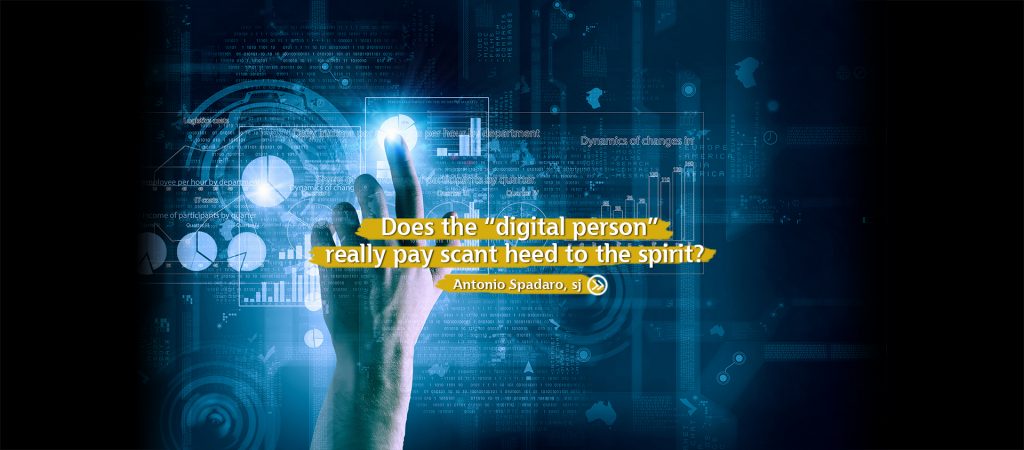The Internet is not like a system of water or gas lines. Nor is it a mass of cables, wires, tablets, cell phones and computers. It would be a mistake to identify the Internet and its use with the technological infrastructure that makes connection possible. Today the Web is, above all in its mobile form, an existential context in which one gets in touch with friends far away, keeps informed, buys things, and shares interests and ideas: it is the “connective tissue” of human experiences. An African student of mine at the Gregorian University once told me, “I love my computer because all my friends are in it.” Thus, communication technologies also contribute to defining a way of living in the world and organizing it, guiding and inspiring individual, family and social behavior. Benedict XVI wrote: “The digital environment is not a parallel or purely virtual world; it is part of the daily reality of many people, especially the young.”
In fact, Gaudium et Spes already spoke specifically about the impact of technologies on human knowing (modus cogitandi). In general, “technical inventions” are relevant because “they have a very direct relation to men’s minds” (Inter Mirifica, 1).
During one of his talks in 1964, St. Paul VI reaffirmed that “the mechanical brain comes to the aid of the spiritual brain.” The technological person and the spiritual one are therefore one and the same individual. Today’s cyberspace culture challenges anew our ability to formulate and listen to a symbolic language that talks about the possibility of transcendence and its signs in our lives. We live our lives, including our life of faith, in an environment which is by now also digital. In the light of these considerations, what are the main challenges that we face and will face? Among numerous possibilities, we can single out at least two which, to me, seem fundamental.
First Challenge
This is certainly tied to the fact that the digital environment is a social network in which relationships are born. If neurons interconnect within our brains, then our brains, with their cultural, spiritual and relational abilities, interconnect within the Internet. To communicate, therefore, no longer means to transmit content, but to share it.
Thus a radical question arises: Is it enough to multiply connections in order to cultivate mutual understanding and communion among individuals? To be connected does not automatically mean to establish a relationship with another person. A community does not automatically generate community. Connection in itself is not enough to transform the Web into a place of full human sharing because communion is not a “product” of communication.
In the digital environment, the Church is called to be not a “transmitter” of religious content but a “sharer” of the Gospel in a complex society in which our understanding of reality is compromised by fake news, manipulation, and the dominance of consensus. Still, the Web gives rise to the need for wide participation: each person can express himself or herself. If this is true in the political and civil spheres, it is no less true in the ecclesial. It is vital that the Church not be governed by algorithmic reasoning.
Second Challenge
This consists of the ability to understand what we once called–and with good reason!–“the interior life.” The spiritual life of people today is undoubtedly influenced by the interactive and immersive dynamics proper to the world of the Internet. In fact, accustomed as they are to the Internet, contemporary human beings seem more adept at interaction than internalization. Generally speaking, “interiority” is synonymous with depth, while “interactivity” is often synonymous with superficiality.
Some time ago, Alessandro Baricco [an Italian writer] compiled the following list: profundity has been replaced by superficiality, reflection by speed, analysis by serialization, deepening by “surfing,” expression by communication, and specialization by multitasking. Does this mean, then, that we are condemned to superficiality? Is it possible to pair depth and interactivity?
Those accustomed to interactivity succeed in internalizing their experiences if they are able to weave them together with relationships that are vibrant, not just passive and receptive. The modern person values experiences that call for participation and involvement. This challenge is enormously important. What, therefore, will be the spirituality of people whose modus cogitandi is changing because they live in a digital environment?
This is also one of the principal challenges of modern education.
Antonio Spadaro, sj
(Source: the weekly newspaper Avvenire)

